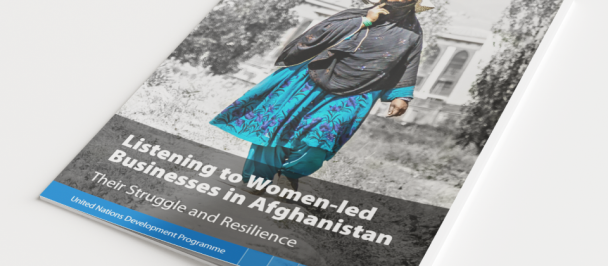by Isabella Caravaggio, Community Engagement Consultant (Preventing Violent Extremism)
Shedding light on the shadow pandemic: The link between gender-based violence and violent extremism
November 25, 2020
As the COVID-19 pandemic has launched many of us into completely new realities and ways of living, something that has been a dependable source of comfort to me is finding solace in my apartment. Despite the changes happening around me, my home – decorated with a Banksy poster, glossy printed photographs of friends and family, and colourful pillows from Laos- is somewhere I can find familiarity, security and ease. But not everyone is lucky enough to have this sense of safety at home. For many women around the world, restrictions on movement and lockdowns resulting from the pandemic mean that being at home brings them in even closer proximity to their abusers. The very place that you are meant to be the safest from COVID-19 is exposing them to even more danger and harm.
Something that has really struck me about the pandemic is how sexual and gender-based violence (SGBV) is so often seen as a private matter. There has been a lot of media coverage calling for a “ceasefire” to the so-called shadow pandemic, which often positions intimate partner violence and SGBV as domestic disputes rather than having their basis in broader gender inequality. I see gender-based violence (GBV) and violence against women (VAW) as a symptom of a much wider societal issue that has far-reaching implications for conflict and violence more generally: harmful constructions of masculinity and gender.
Throughout the COVID-19 pandemic we have seen enormous spikes in levels of violence against women and girls within Asia and around the world, but we have also seen increases in factors that are known contributors to violent extremism such as the spread of disinformation, human rights challenges, and increased online recruitment. These different forms of violence are regarded as being the result of very different factors. But what if there is a factor underlying both types of violence that links them more closely than we might think
Recently, more light has been shed on how harmful constructions of masculinity and what it means to be a man are influencing violent extremist radicalization and recruitment. This made me think about why we aren’t speaking more about how harmful masculinity is a factor contributing to VAW and GBV. A recent report by UNDP and UN Women, supported by the EU and Japan, found that the social norms, attitudes and structures that normalize gender-based violence also contribute to the violent conflict and extremism. The research outlined that sexual and gender-based violence (SGBV) can actually serve as a predictive indicator for incidents of violent extremism and terrorism.
Rather than being viewed as unconnected, violent conflict and violence against women should be viewed as part of a continuum. The impact of harmful gender norms and constructions of masculinity in the context of conflict prevention and peacebuilding is still a relatively under-researched area. But we have seen through the Conflicting Identities study that these harmful notions of what it means to be a man can prescribe violence as a way of achieving control, honour, and power. More research is needed in other international development sectors to see how harmful gender norms may be undermining progress.
If we can better understand the social norms around masculinity and power that contribute to both sexual and gender-based violence and violent extremism, we can better understand and tackle the harmful gender norms that contribute to both forms of violence and build a future where everyone can feel safe at home and in their communities.
For more information on this topic, see "Conflicting Identities: The Nexus Between Masculinities, Femininities and Violent Extremism in Asia" or visit this website.
By Isabella Caravaggio
Community Engagement Consultant
(Preventing Violent Extremism)
isabella.caravaggio@undp.org

 Locations
Locations


